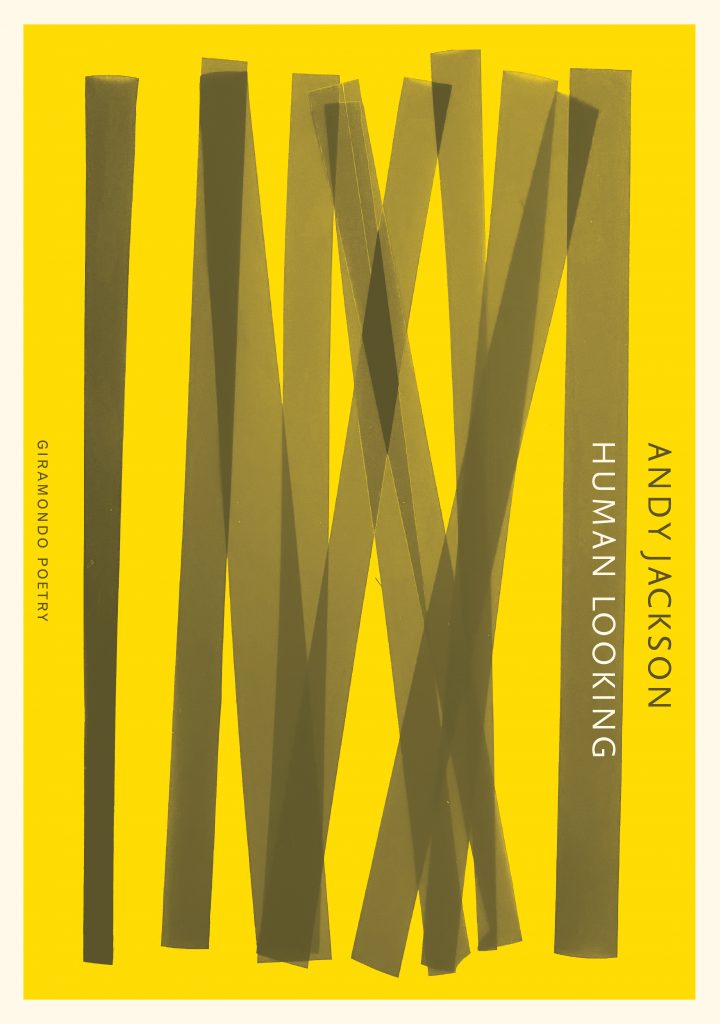Author: Alice Desmond
Max Easton: a note on The Magpie Wing
The Magpie Wing began as a collection of short stories that had been turned down by a number of websites and literary magazines between 2013 and 2019. Finding it too difficult to pitch these shorts, I printed them all out in a zine edition of twenty-five before selling twenty-four of them at cost to friends and acquaintances. When I was down to the last copy, I thought it’d be funny to mail it to the offices of Giramondo considering the unwanted history of those stories, with a hastily type-written letter and ‘resume’ outlining my ‘experience’ to write a novel. I wrongly assumed they would trash it on receipt, but after a few meetings and three iterations of a book, here we are!
In trying to explain what The Magpie Wing ended up being about, I find myself changing the description of the book depending on who I’m talking to. Sometimes I say it’s about rugby league families of south-west Sydney, other times the discovery of subcultural punk communities in the inner city. I think that oftentimes it’s about the related dynamics at the centre of all social pursuits as much as it is about their differences. But maybe at its heart is a depiction of the very specific generation who grew up to witness the repercussions of: the advent of the internet, the end of the Cold War, the rampant privatisation of Australian state services, the accelerating rate of gentrification in Sydney, 9/11 and the GFC, the financialisation of everything, and the rise of a new social consciousness adjacent to the end of history.
I suppose that’s as close as I can get to describing the intent of the book, even if much of it was an accident. I did intend for the heroes of this book to be equally as influenced by Tommy Raudonikis and the Western Suburbs Magpies as they were by Kathy Acker, The Dicks and Noam Choamsky: to have equal appreciation of the great sport of rugby league as they do the (ir-)relevant cultural artifacts of twenty-first century Sydney punk music, all while dreaming of related anti-capitalist pursuits. I hope that’s all on the page somewhere in there.
I worked about as hard as I have on anything to get this close to what I wanted it to be. During the editing process, I was desperately trying to make sure that all that hard work wasn’t visible, as though it all fell onto the page like ~feathers drifting softly to the ground~ … but how pretentious! Tonight, as I hand in the final edits and this author note, I think I’ve finally made peace with the fact that a work that sides with workers can get away with showing some stitches and seams.
Thanks for reading this if you find the time to do so.
– Max Easton
Our new-look poetry series
Poetry collections have always been an important part of Giramondo’s publishing output. They have a relatively small readership, but for this reason they lend themselves to special treatment, whether in terms of the poets featured, or the design of the collections themselves. Knowing how skilled Jenny Grigg is in the use of shapes and colours, I asked her to design the covers of our new poetry collections in a way which would draw attention to the individual titles, while at the same time reinforcing their collective identity, as elements in a distinguished series. The use of abstract designs would lessen our dependence on pictorial images and, hopefully, bring poetry to the attention of a larger circle of readers.
— Ivor Indyk, Publisher and Director
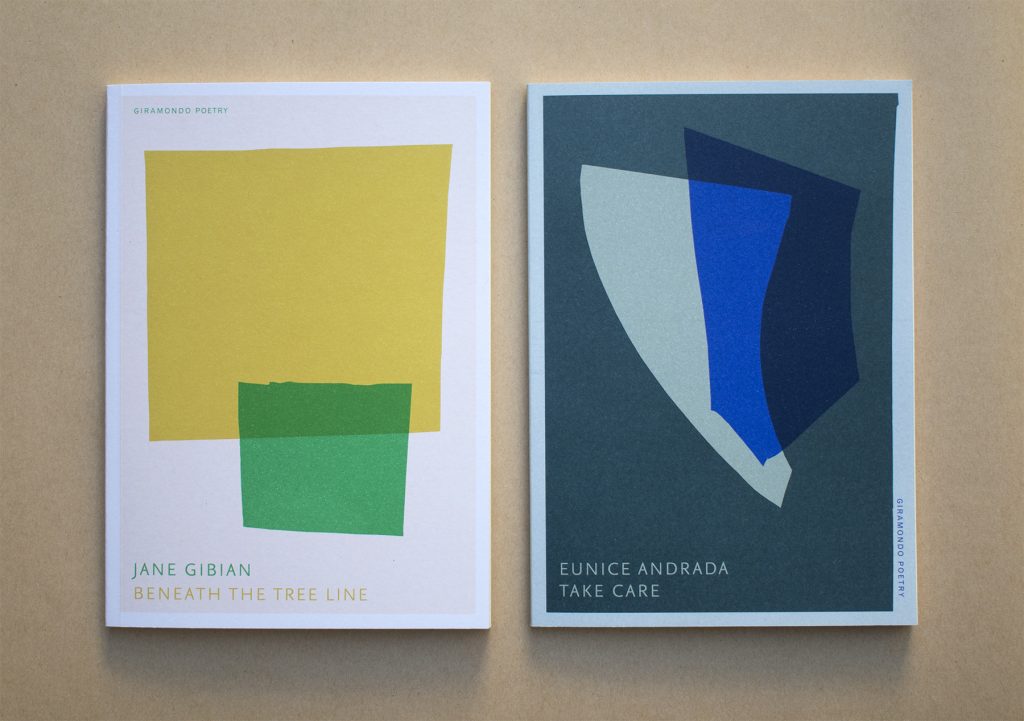

Jenny Grigg on the design process
The poetry covers in the new series were configured by maneuvering coloured plastic shapes across the surface of an unprinted book dummy by hand as I watched for the appearance of concepts suggested in the poems, in the intersecting, coloured, translucent shapes. I prefer to work with immediately responsive analogue techniques to avoid cognitive interference caused by operating computers while designing.
I originally used this method to initiate a series of designs for Peter Carey in 2001. Much like rapid prototyping except the prototypes are actually published – the results from the process are distributed across the books in a given suite to give them coherence as a body of writing.
In this process, photographs record potential scenes as they appear, and the designs resolve when visual, material and verbal meanings interrelate. For example, the design for Andy Jackson’s Human Looking began as a series of strips because strips were quick to cut, and their abstract shapes raw material for meaning. Laid vertically like people, when these were shifted about, they performed as a kind of language themselves. This abstract approach fitted Jackson’s intention ‘to disrupt assumptions around visibility’, and solved the problem of trying to find a suitable visual to illustrate this point, suggesting ‘difference among normality’ while at the same time, as the author noted, the strips could be seen as ‘hinting at poetic lines’.
Design researcher Johanna Drucker defines this kind of translation as a form of visual knowledge production; a process that simultaneously interprets visualisations and visualises interpretations. Whilst designing, I seek to decipher meanings in abstract visual configurations in response to the literary work, as well as to determine how abstract an image can be and retain meaning for others. Book publisher Roberto Calasso referred to the book cover design process as ‘reverse ekphrasis’. Rather than using words to describe an image, images are authored to reflect the meaning of words.
In other words, the covers represent a series of visual as well as material metaphors. A dark underlying shape suggests ‘the past affecting the present’, a theme of Adam Aitken’s collection Revenants. The intersection between a blue and light shape conveys thoughtfulness between two women as one offers the other refuge, a scene from Eunice Andrada’s poem ‘Take Care’; and two overlaid rectangular shapes combine to suggest the shape of a tree and the concept of ‘beneath’, for Gibian’s collection Beneath the Tree Line. The material’s translucency is pivotal in the conveyance of these meanings.
An underlying interest of these works is the intersection of visual and verbal communication, and how these inform new interpretations and correspondences. Given that book cover design is embedded in marketing, and designs are often commissioned to interpret the wishes of predetermined markets, in these designs, by contrast, literature leads, the publisher briefs the designer to respond to the concerns of the writer, and the market has its opportunity to react after publication.
— Jenny Grigg, Publication Designer
The first two poetry collections in our new-look poetry series, Beneath the Tree Line by Jane Gibian and TAKE CARE by Eunice Andrada, are in stock now and Human Looking by Andy Jackson is available for pre-order ahead of its October release.
Readers can also receive our poetry collections as soon as they are printed, and at a substantial discount, by subscribing to our subscription service.
Launch Events for Gentle and Fierce and Nostalgia Has Ruined My Life
Join us online and in person to celebrate the publication of two new works of prose: Gentle and Fierce by Vanessa Berry and Nostalgia Has Ruined My Life by Zarah Butcher-McGunnigle.
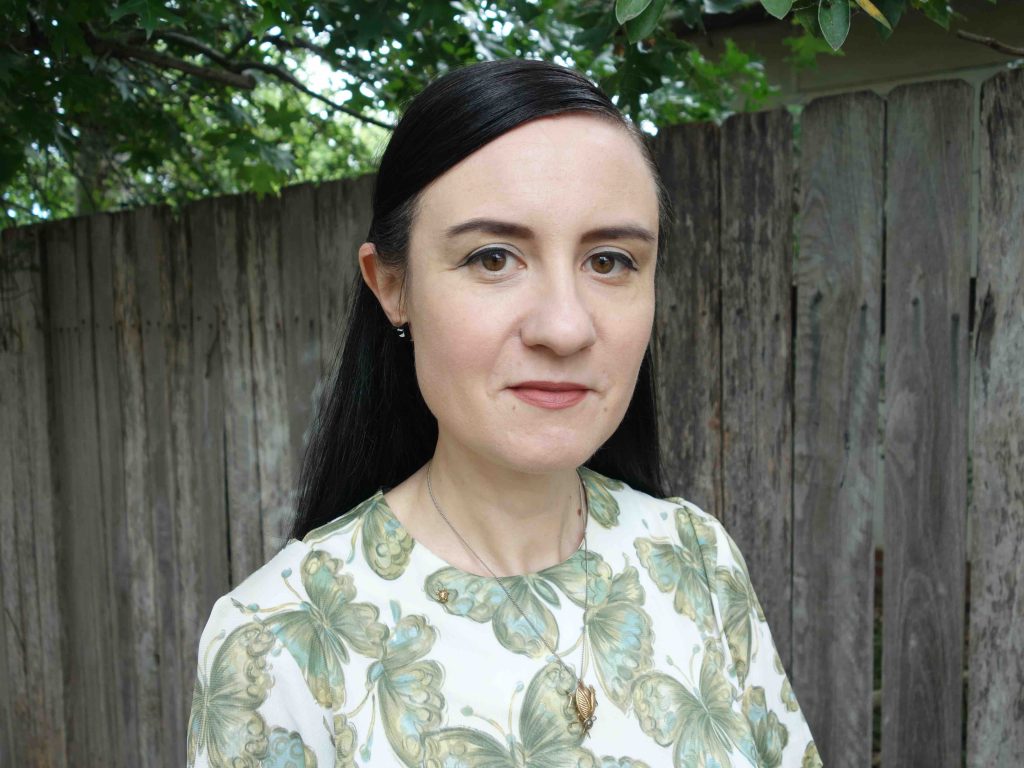
Online book launch: Gentle and Fierce
Wednesday 18 August, 6.30 pm AEST
Join Vanessa Berry in conversation with Keri Glastonbury as she discusses her new book, Gentle and Fierce – a collection of essays, released in June 2021, on the way that mankind relates to and imagines non-human animals and the world we share.
The event is free and streamed live online. RSVP essential.
Zarah Butcher-McGunningle in conversation
Tuesday 24 August, 6 pm AEST / 8 pm NZST
Join New Zealand author Zarah Butcher-McGunnigle in conversation with Going Down Swinging editor Hollen Singleton, as they discuss Butcher-McGunnigle’s new book, Nostalgia Has Ruined My Life.
The event is free and streamed live online. RSVP essential.
Auckland book launch: Nostalgia Has Ruined My Life
Thursday 2 September, 6.30 pm NZST
We’re delighted to launch Nostalgia Has Ruined My Life with an in person event at Strange Goods, featuring readings by Josephine Frances K and Eden Bradfield.
Strange Goods, 281 Karangahape Rd, Auckland.
Free, RSVP essential.
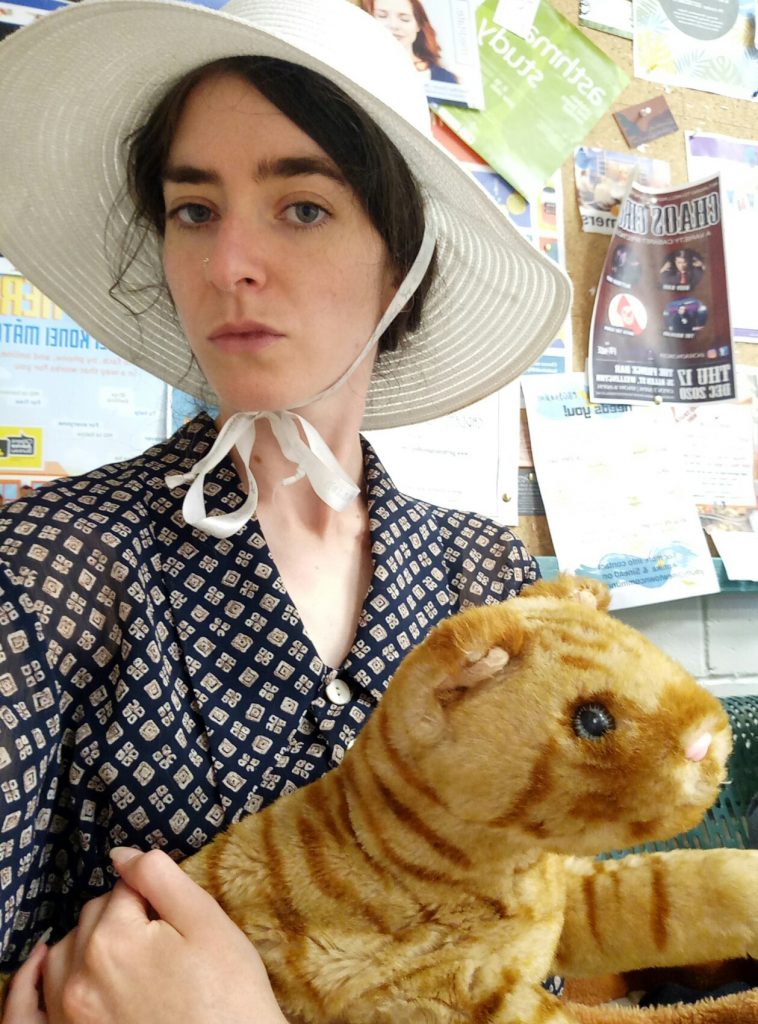
Introducing the Speculate Prize
The Speculate Prize is a new award for an unpublished speculative fiction manuscript, presented by RMIT Writing & Publishing and RMIT Culture in partnership with Giramondo Publishing, sponsored by Whispir, and supported by the Speculate Literary Festival.
One winner will receive $5000 prize money, mentorship from Giramondo Publishing and a week-long residency at RMIT Culture’s McCraith House on the Mornington Peninsula, Victoria.
This biennial prize is aimed at writers from Australia and Aotearoa New Zealand who explore the expansive possibilities of literature: those who imagine other worlds – other realities – that may even exist within our own. We wish to uncover and support writers who embrace new literary modes and extend the possibilities of the novel and short story form.
Submissions are open and close 1 September. The winner will be announced in November.
The 2021 Speculate Prize will be judged by Rose Michael (RMIT), Astrid Edwards (Melbourne Writers Festival), Nick Tapper (Giramondo) and Declan Fry.
The winner will receive:
- $5000 prize money (inclusive of travel costs)
- a mentorship from Giramondo Publishing
- a week-long residency at RMIT’s McCraith House on the Mornington Peninsula, Victoria
One highly commended author will receive:
- a twelve-month book subscription (valued at $250) from Giramondo Publishing
- a feedback session with a Giramondo editor
Speculative fiction is the perfect form to write the future, right the past and rewrite the present. This biennial prize is aimed at writers who explore the expansive possibilities of literature: those who imagine other worlds – other realities – that may even exist within our own. We wish to uncover and support writers who embrace new literary modes and extend the possibilities of the novel and short story form.
- The manuscript must be complete, no less than 30,000 words and no more than 100,000 words.
- The manuscript must not be published (in any country or form, including digital and self-published).
- The manuscript must not be under consideration with other publishers or agents.
- The manuscript should be in Word or PDF, a serif font, 12 pt, with 1.5 line spacing and page numbers.
- The manuscript should include a cover sheet with title, author name, and a brief one-paragraph summary. (If you wish, please specify whether you identify with the community represented in your piece. As per Overland’s recent editorial statement on blind judging, this response will only be provided to judges if they ask for it.) The author’s name should not appear anywhere else on the manuscript.
- The Speculate Prize is open to residents of Australia and Aotearoa New Zealand.
Visit bit.ly/SpeculatePrize for full details and to enter.





HEAT editor announced
Giramondo Publishing is pleased to announce the appointment of Alexandra Christie as the editor of the third series of HEAT magazine. Ms. Christie joins the Giramondo team following four years as a literary agent at The Wylie Agency’s New York office, where she specialised in fiction and nonfiction, as well as managing authors’ estates. Prior to joining The Wylie Agency, she worked as a publicist at Macmillan Australia. She holds a Bachelor of Arts (Media & Communications) from the University of Sydney.
‘International perspectives have been fundamental to the outlook of both HEAT and the Giramondo book imprint, and it is Alex’s experience in this area, as well as her knowledge of contemporary literature and her skill in working with authors, that made her an impressive candidate for the position’, according to Giramondo publisher Ivor Indyk.
‘The previous two series of HEAT are populated with extraordinary names from Australia and abroad’, Ms. Christie says. ‘I am deeply honoured to introduce a new series of the best little magazine to emerge from these shores, to writers and readers here and overseas. In this era of great uncertainty, the mandate Ivor put forth in the first issue will continue to shine as a lodestar for the series to come: HEAT is a controlled intensity. We stand for a simple integrity. And for writing which is committed, passionate, innovative and adventurous.’
HEAT was founded in 1996, in the wake of the Demidenko affair, with the purpose of publishing innovative Australian and international writers of the highest quality. Fifteen issues were published in the first series, from 1996 to 2000. It was succeeded by the new series HEAT, designed by Harry Williamson, with twenty-four issues published between 2001 and 2011. The third series of HEAT, designed by Jenny Grigg, will begin publication early in 2022, in a new bimonthly print format delivered directly to readers and available from selected bookstores. Detailed information about the magazine will be made available in the next few months.
This initiative has been made possible by a Four Year Funding grant from the Australia Council, and the continuing support of Western Sydney University.
For further enquiries, please contact heat.editor@giramondopublishing.com.
Fiona Kelly McGregor presents Lanny K aka DJ Mazeltov’s Songs 4 Prayer and Angst
In her essay collection Buried Not Dead, McGregor goes in search of a DJ she worked with from the 1990s to the 2000s. ‘Looking for Lanny K’ resurrects those giddy years, and ends with a description of a set by one of Lanny K’s current aliases, DJ Mazeltov.
Now available, DJ Mazeltov’s Songs 4 Prayer and Angst ‘is a psychedelic mix of Egyptian, Iranian and other West Asian trippy delights from the 1960s and 70s, with contemporary stuff from around the world thrown in’.
After a visit to Lanny K in 2013, McGregor concludes her essay with the following passage:
Before I leave, I ask Lanny if he has any recent mixes. He gives me a CD with the fabulous title The Jerusalem Broadcasting Service Presents DJ Mazel Tov in Shabbat Radio: Music for Feast, Prayer & Relations. He tells me he’s been getting into Iranian and Egyptian psychedelia. ‘You know, stuff like that.’
Driving away from Canberra, I slot in the CD. The strangest, most cinematic music since Oberon swirls into the car. It is mixed with the ambient genius Lanny ascribed to Bill Morley, where the fusion of outro and intro is so seamless you don’t realise you’re into the next track till it is completely on top of you. One minute I’m listening to a choir singing ‘Amen’, next it’s sitar à gogo. There’s the obligatory musicological voiceover (The music from her gold anklets sounding the fifth note of the scale was honey sweet), a strait of hypnotic toms, then a kitsch Arab cartoon (Ha-harrrh, buy my delicious shish-kebab!). And is that Yoko Ono rising from a swampy pulse? The finale drifts into Californian noir, with tempo changes and strumming guitar. I find the song on YouTube – Grandaddy’s ‘He’s Simple, He’s Dumb, He’s the Pilot’. It feels elegiac, the lyrics revealing something tortured about isolation, the Icarus urge. It ends with a question, Are you giving in 2000 man?, again and again. Then I realise it’s ‘My Buddy’ playing, through a voice box, and it’s over.
What a great set. I wish you could hear it.
‘Looking For Lanny K’, from Buried Not Dead
Jane Gibian: a note on Beneath the Tree Line
More and more I have become preoccupied with the natural world and our place in its increasingly precarious situation. My thoughts and writing practice seem to be most active in places of wildness, preferably wilderness. Many of these poems engage directly with the natural environment through a range of approaches: human engagement – both fascination and despair – and the natural world itself, disinterested and unforgiving of us, one animal in a complex living web.
With both wonder and sadness I cross a suburban river every time I walk to the station and observe its rubbish-choked mangroves. Yet sometimes there is a spoonbill, sifting the water from side to side with its incredible beak. These poems come from an attempt to explore such mixed feelings and to represent the living world through varied textual approaches. But I don’t ignore the attractions and constraints of human languages, which appear in other poems – the fabricated jargon we use in fields such as technology, food and consumerism, as well as the opportunities offered by different languages and cultures.
Across the collection lies a gossamer web that stretches between people, places and the natural world, threads that are gathered and sustained over time. Time in its vagaries and elusiveness is another poetic focus. Beneath the Tree Line recognises that humans need a habitable environment just like plants and animals, something we ignore at our peril. To walk through a forest and notice the subtle changes of ecosystem as you move through an ancient landscape, one that was sustained by Australia’s first inhabitants, who care for the land so much better than many settlers. It is a collection alive to simple joys such as watching honeyeaters in the native garden outside my bedroom window in the morning.
— Jane Gibian
Zarah Butcher-McGunnigle: a note on Nostalgia Has Ruined My Life
‘I don’t have any plans but I have to pretend I have some’ is a line I wrote in a document of 2016 notes, which ended up in the manuscript. My writing process tends to be that I write lots of small pieces and notes over a stretch of time and then I start to see themes and a narrative developing which I want to work with. Some months/years are just for taking notes and observing, other months are for making things using notes I’ve gathered. I started writing this book when I was very unsure about what I was doing in my life, as I had been for my entire twenties, spending huge chunks of time unemployed and depressed, going on dates to distract me from not having a job, and trying to manage chronic illness. People assign less value, respect and agency to the unemployed, and often treat it as a personal and moral deficiency rather than a societal failure. I’ve noticed how temporary unemployment is tolerable, as is temporary illness, but chronic or recurrent unemployment and chronic illness are not. While working on this book, I thought of Johanna Hedva’s ‘Sick Woman Theory’, in particular when she talks about how being sick is a capitalist construct, and how destructive it is to conceive wellness as default because it invents illness as temporary, and therefore care is only occasionally required; care isn’t normal.
When you don’t really feel like you have a future, or the sort of future that is available to you seems uncaring and undesirable, then you can get stuck in the past and nostalgia. So many people, taxi drivers and dates and family members and housemates, have encouraged me to find meaning in work rather than romantic relationships or anything else, and asserting that once I found a good job that I really liked then my life would improve. Although it is necessary for the majority of people to have a job, I don’t think it’s a healthy or useful thing to place so much value on being part of a capitalist system and believing that being part of it will lead to self-fulfillment and purpose. traditional ideas of success and full-time work are unachievable to many people with chronic mental or physical illness/disability.
If work and career aren’t appealing ways of gaining meaning, one might look to relationships as another source of fulfilment. As the narrator says near the beginning of the book; ‘I’m really depressed, maybe I should have a baby.’ Romantic and sexual relationships are much more interesting to me than developing a career. The underlying motivation for love and connection is positive, but of course people are incredibly unstable, and focusing intensely on relationships can also be disappointing and unsatisfying.
Even though this all sounds bleak and pessimistic, I’m not a pessimist and I think the inability to conceive of the future can sometimes lead to a healthy detachment and acceptance of life unfolding as it does. Even though I think a lot of things are low-key hellish, I also think most things are funny and absurd, and it’s important to be able to see the humour in everyday mundane situations.
— Zarah Butcher-McGunnigle

Paid internship program for emerging editors
Giramondo is delighted to partner with Writing NSW to offer a paid internship for an emerging editor. This initiative is part of a range of new programs that Writing NSW has designed to increase cultural diversity in writing and publishing, with funding from Create NSW.
Applications for the internship program are now open. Three emerging editors will be selected for the six-month program, with the aim of helping them to secure ongoing paid employment in the industry. Along with Giramondo, the participating publishers are Hachette, and Pan Macmillan. Interns will spend one day per week in their allocated publishing house and will also be supported by an external mentorship program, led by Radhiah Chowdhury.
Emerging editors from Indigenous or culturally diverse backgrounds are particularly encouraged to apply. Applicants must be looking to build a career in publishing and have a demonstrated enthusiasm for and commitment to writing and/or editing. Formal qualifications are not required. Applicants must live in NSW, be Australian citizens or permanent residents and be over the age of 18.
Successful applicants will receive:
- $6000 plus super
- The opportunity to work one day a week in a publishing house over a six-month period (24 days in total)
- External support and mentoring from Radhiah Chowdhury
- Membership from Writing NSW
Full details about the internship program for emerging editors and the application form are on the Writing NSW website. Enquiries can be sent to Julia Tsalis at info@writingnsw.org.au.
Applications must be submitted via the Writing NSW website by midnight (AEST) on 8 August 2021.

Vanessa Berry: a note on Gentle and Fierce
Much of my writing hinges around a question: where do our memories reside? Within ourselves, of course, but they are always connected to the places, people, beings and objects that have played meaningful roles in our lives.
In Gentle and Fierce I reflect on animals, and how my life stories have been shaped by their presence. These essays and illustrations form a discontinuous memoir, based around the animals and animal representations that have expanded my perceptions and sense of self.
Having spent my lifetime in city environments, many of my experiences with animals have been through daily encounters with domestic and urban animals, as well as through representations of animals in art, literature, media and domestic objects. I have found that these encounters, rather than being mundane or remote, can provide a way of connecting with animal lives. The accompanying hand-drawn illustrations of significant objects from the essays reflect this personal perspective and understanding.
The time in which my life is occurring is a turning point for the planet. Environmental change and destruction have escalated to the point at which extinction of species and disruption of ecosystems is occurring on a vast scale. The cycles and forces at work within this can feel epic in scope, beyond the orbit of any one individual life, but are also the cumulative effects of countless human actions, decisions and propensities. In this lies the possibility of change. By drawing attention to the many ways our lives are interconnected with animals, I hope that Gentle and Fierce will give readers a sense of this potential.
– Vanessa Berry

Toby Fitch: a note on Sydney Spleen
A few years ago, when I was mistranslating Arthur Rimbaud’s prose poems from his Les Illuminations into a variety of inversions (visual poems, formal poems, erasures, anti-lyrics), it occurred to me that I could try a similar project with the prose poems of Charles Baudelaire’s Le Spleen de Paris, another favourite book of mine. However, the same processes – taking the original French and homophonically translating backwards through it to generate weird and wild new poems – didn’t create anything as interesting as that previous project. I began instead to think of Baudelaire’s idea of the splénétique as a mood or mode, and whenever I wrote a poem with a more trenchant, urban realist or political bent, I set it aside in a folder on my computer that I’d named ‘Sydney Spleen’. Over the next few years, some of my more scathing and satirical poems ended up there. Perhaps that folder, and the Baudelairean mood, freed me up to vent my spleen in poetry in ways I hadn’t been doing. The project languished a bit while other quite playful books of mine came to the fore (ILL LIT POP in 2018 and Where Only the Sky had Hung Before in 2019), but 2020 unearthed all kinds of splenetic moods, and so in lockdown, despite four precarious jobs and homeschooling, I found myself writing into the nights to capture the fragmented emotions I was experiencing with my family, and vicariously through the internet, as we watched and re-watched a world seemingly undergoing apocalypse upon apocalypse – megafires, 1 billion animals dying, massive hailstorms and flooding, the ongoing pandemic, the return of fascism ‘like a fossilized piece of moon’ (Ernst Bloch); all symptoms of a broken but still all-consuming capitalist system that allows the ruling classes to exploit the Earth unchecked at the expense of minorities and the working class.
– Toby Fitch
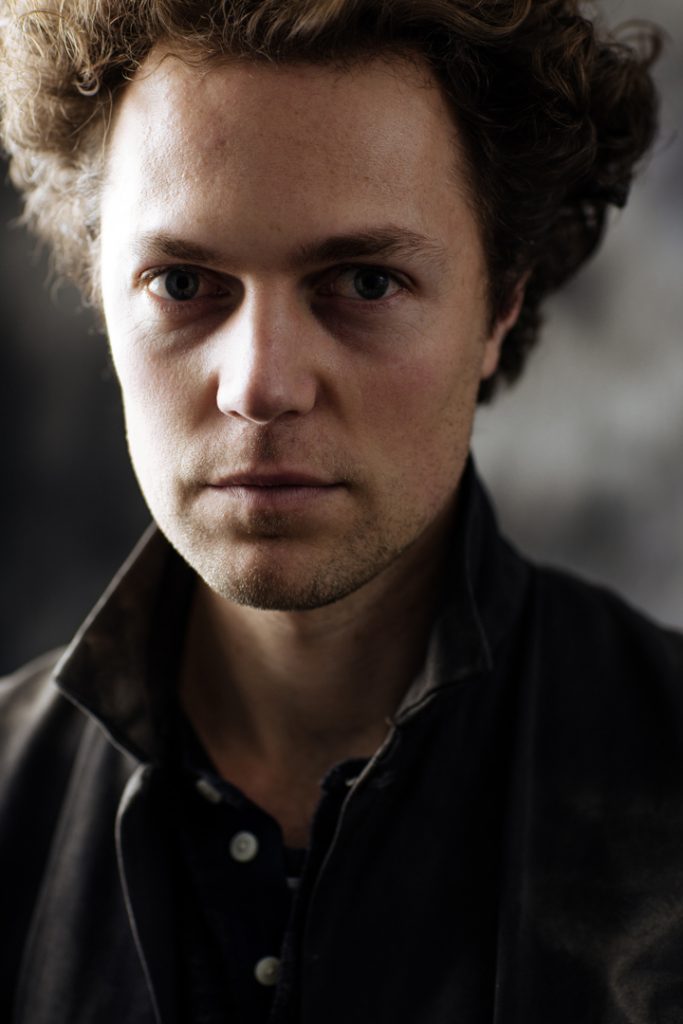
Jenny Grigg wins Australian Book Design Award
We’re delighted to share the news that Dr Jenny Grigg has won the ABDA award for Best Designed Literary Fiction Cover for her work on A Body of Water by Beverley Farmer. The judges praised ‘the understated simplicity‘ of Grigg’s cover, with its ‘minimal means but maximum effect’.
Grigg designed the cover for this new edition of Beverley Farmer’s out-of-print classic A Body of Water, which in its mixing of genres – essay, memoir, fiction, folk tale – opened up new frontiers for Australian literature.
Early versions of the design responded to a quote from Wittgenstein in A Body of Water:
Human beings are like rivers: the water is one and the same in all of them but every river is narrow in some places, floes swifter in others; here it is broad, there still, or clear, cold, or muddy or warm. It is the same with men. Every man bears within him the germs of every human quality, and now manifests one, now another, and frequently is quite unlike himself, while remaining the same man.
A second point of reference from A Body of Water was Henri Matisse’s 1914 painting Intérieur, bocal de poissons rouges (Interior with a Goldfish Bowl). The shape suggests Farmer herself, in its female form, and also a vase, and contains textures to reflect Farmer’s affinity with the sea. The fish were eventually removed to reference Farmer’s ‘body of water’ more directly than the Matisse painting.
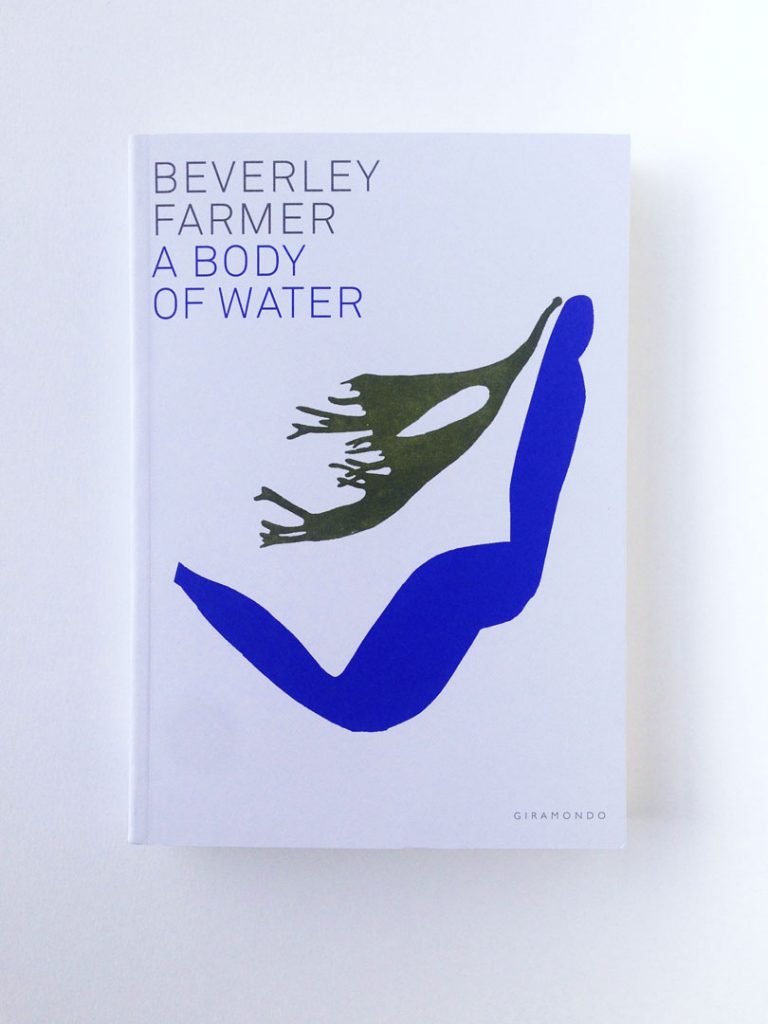
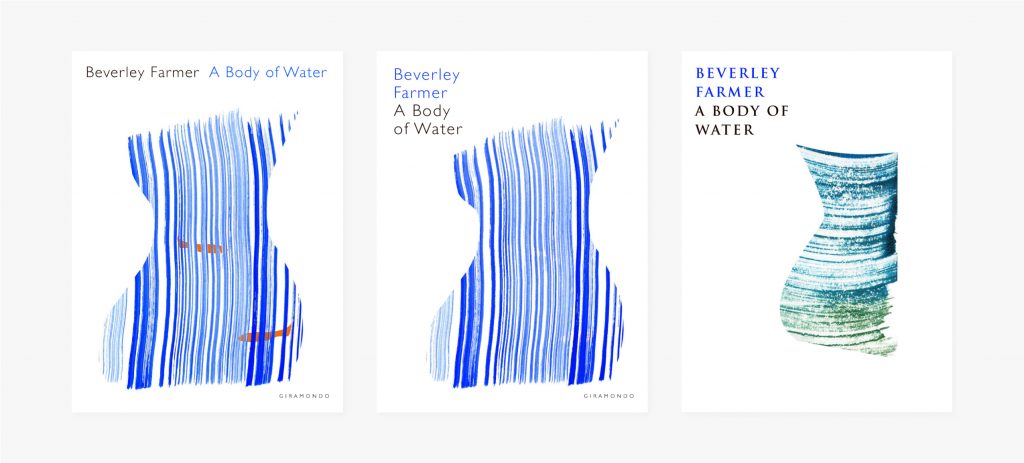
Responding to a photograph of Farmer sitting on a rock by the sea, an alternate reference to a mermaid was conceived, collaging a fragment of seaweed and a rotated section of Matisse’s cutout Blue Nude with Hair in the Wind. Whether diving out of frame, or weightless and floating seahorse-like – the final design was chosen from these and other possibilities for its clarity and vigour. The collaging of shape and colour are relatively inexpensive, expressive tools in the context of book cover design.

In her ABDA entry, Grigg describes the rationale for her final design:
The cover design is a visual metaphor for the title and the fugitive spirit of the author as she reflects about her life in her 46th year, living alone by the sea after the failure of her marriage. The juxtaposition of a section of a Matisse cut-out, and a piece of seaweed portray her as a mermaid. Matisse is a theme within the book, and seaweed signifies her life lived by the sea. Throughout, one is aware of the writer’s own body, as an entity which shifts its identity like water, with its changes of mood, relationships and reflections.
Grigg is Giramondo’s publication designer and a lecturer in the School of Design at RMIT University. She has won multiple design awards, a 2011 State Library Victoria Creative Fellowship and induction into the Design Institute of Australia’s Hall of Fame in 2020. Her design for A Body of Water was also a finalist in the 2020 Australian Graphic Design Association Awards.

Ben Juers highly commended in the ABDAs for Best Designed Young Adult Cover
We’re pleased with the news that Ben Juers was highly commended in the Best Designed Young Adult Cover award for his illustrated design for Rawah Arja’s The F Team at last week’s Australian Book Design Awards, with the judges commenting:
Innovation is always bound to impress, with The F Team featuring a bold illustration that evokes drama and interesting typographic treatment [which] combine to create an eye-catching cover which breaks the mould of young adult covers.
Describing the rationale for the cover, Juers said:
In designing the cover for Rawah Arja’s The F Team, I aimed to reflect the story’s anarchic energy, and make it stand out from other Young Adult novels. I wanted to strike a balance between precision and chaos, in keeping with the nature of rugby (around which the story revolves) and the dynamics underlying it, which are constantly in flux: friendship, animosity, cultural difference, masculinity. To this end, I looked to the expressionist, off-kilter charm of Lyonel Feininger and the efficiency of European ligne claire cartooning as models.
Ben Juers is a cartoonist, book cover designer and teacher. He is a co-ordinator at Glom Press and a member of Workers Art Collective, Trades Hall Artists Studio, Workers Solidarity and Other Worlds Zine Fair. Follow him on instagram @benjuers.

The F Team shortlisted for two awards
We are delighted to share the news that Rawah Arja’s The F Team has been shortlisted for two new awards. Her debut novel is nominated for the Russell Prize for Humour Writing and the 2021 Readings Young Adult Book Prize.
The Russell Prize is Australia’s only prize for humour writing and is awarded biennially, with this year’s winner to be announced at an event at the State Library of NSW on 17 June. Tickets are available on Eventbrite.
The Readings Young Adult Book Prize is awarded annually to the best new contribution to Australian young adult literature. This year Arja is nominated alongside five other authors, with the winner to be announced on 15 July.
The F Team has been recognised with nominations for several major literary awards including the New South Wales and Victorian Premiers’ Literary Awards, the Australian Book Industry Awards, the Children’s Book Council of Australia Book of the Year Award and the Australian Book Design Awards.
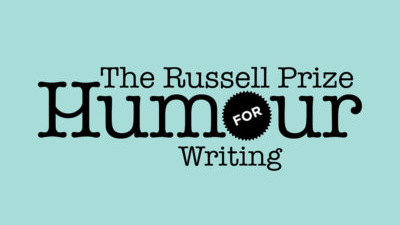

Book launch: Unanimal, Counterfeit, Scurrilous by Mark Anthony Cayanan
To celebrate Mark Anthony Cayanan’s new poetry collection Unanimal, Counterfeit, Scurrilous, the author will be joined in a free online conversation about their book with poet Eunice Andrada. The event will include readings from the book.
Wednesday 9 June, 7 p.m. (AEST)
Online | Free, RSVP essential | Register on Crowdcast
About the book
Unanimal, Counterfeit, Scurrilous is a work of wild erudition and rococo elaboration, a collection of poems that loosely channels the dynamic of desire and inhibition in Thomas Mann’s novella Death in Venice. The poems follow the trajectory of the ageing Aschenbach’s pursuit of youth and beauty, transmuting his yearning and resistance into jittery flirtations with longing, decay and abandonment against a backdrop of political violence. The poems have an exuberant candour, formed by polyphonic allusions which enact the intersectionality of the speaker, by turns melodramatic and satirical. Like the tragic protagonist of Death in Venice, Cayanan’s collection manifests a longing for extroversion sabotaged by its own will. It is a queer performance of anxiety and abeyance, in which the poems’ speakers obsessively rehearse who they are, and what they may be if finally spoken to.
About Mark Anthony Cayanan
Mark Anthony Cayanan is a poet from Angeles City, Philippines. They obtained an MFA from the University of Wisconsin in Madison and are a PhD candidate at the University of Adelaide. Among their previous publications are the poetry books Narcissus and Except you enthrall me. They teach literature and creative writing at the Ateneo de Manila University.
About Eunice Andrada
Eunice Andrada is a Filipina poet and educator. She is the author of Flood Damages (Giramondo Publishing 2018), which won the Anne Elder Award and was shortlisted for the Victorian Premier’s Literary Award for Poetry. Born and raised in the Philippines, she now lives and writes on unceded Gadigal Land. TAKE CARE, her second collection of poetry, will be published by Giramondo in September.
Dong Li: a note on The Gleaner Song
I got to know Song Lin well while at Ledig House for a Translation Lab residency. On a long walk in the countryside of Upstate New York, I saw his eyes light up as a deer leapt from the wild into a wide-open field. As the evening hues shifted farther into the forest, his line of sight followed the deer until it vanished into the night. We talked about the deer, and later he asked me to translate a poem that he had written to record the occasion. This is a curious poet who opens himself to the world around him. His songs migrate from one word to another, from one language to another. The landscape of his travels becomes a map of his poetry, which, in turn, amounts to a sensitive anthropology of our migratory world.
Not unlike his predecessor Bei Dao, whose candid declarations of resistance marked the tenor of the time, themes of politics and exile permeate Song’s poetic output. When the Tiananmen event exploded in Beijing, Song led student demonstrations in Shanghai and was imprisoned for almost a year. But unlike many self-claimed ‘exiled poets’, Song has never used imprisonment to his advantage. Instead, what has interested Song is the joy of making art out of words and how poetry can group words and form company. His joy in poetic expression led to his lengthy wanderings through France, Singapore, and Argentina. These heightened his sense of language and its central role in his poetry.
Song has been somewhat neglected in his native language. Political pressure was the unspoken background. During those wandering years, his two formidable titles Fragments et chants d’adieu (Fragments and Farewell Songs) and Murailles et couchants (City Walls and Sunset) appeared in French bilingual editions. He was unable to publish in China then, so he used his editorship with the eminent journal Jintian to scout out and publish poets living under difficult circumstances. Since his return to China, he continues to support young poets and champions translation. Unlike many poets who are eager to please Western ears, Song advocates for the classics and for a thorough study of the Chinese language. When dividing lines between different camps of poetry and poets widen, Song is the one, not to force cohesion, but to promote tolerance and understanding.
Song’s faith in poetry and his generosity towards poets across aesthetic, generational, and national boundaries make him one of the most unusual poets to have emerged in recent Chinese history. His poetry weaves through American, classical Chinese, French, and Latin American traditions. His influences are the modernists, the surrealists, the romantics, the deep imagists and the objectivists – but what distinguishes Song is his ability to take them all, and make them his own, and make them new. His is a lyric that continues to open up horizons.
– Dong Li


